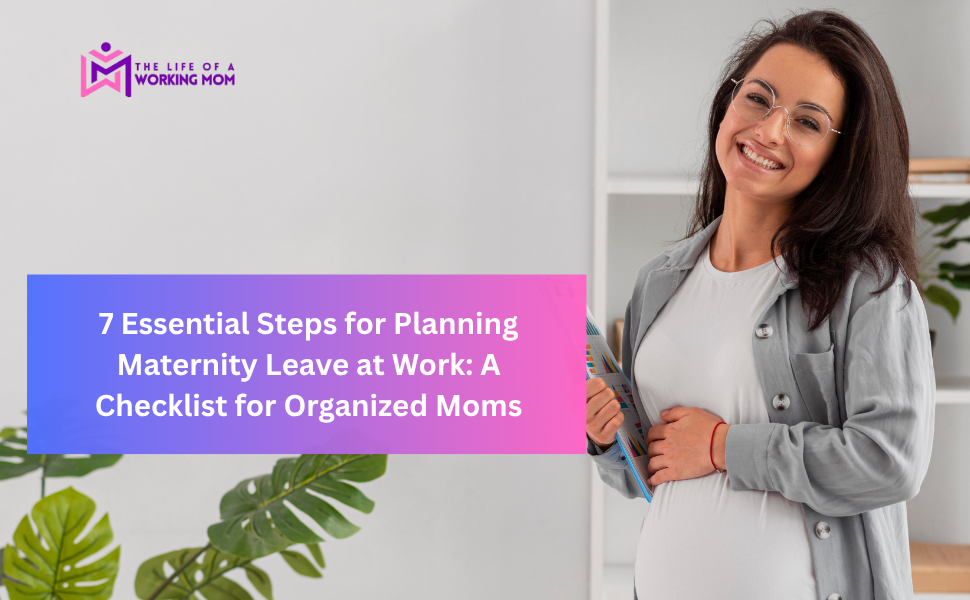Planning for maternity leave is an exciting step, but it can also be a lot to handle. You have a baby on the way and work to do, and it can be hard to find the right balance.
If you do things the right way, you can go into this next chapter feeling ready, supported, and ready to focus on what’s most important: welcoming your new baby.
This simple guide will help you in planning for maternity leave with less stress and more confidence.
Every step, from planning your workload to talking to your team, is meant to help you on both your professional and personal journey.
1. Learn About Your Leave Options

When you begin planning for the maternity leave process, find out what maternity leave your employer offers. Speak with your HR department or manager to understand how much time you can take, whether it is paid or unpaid, and when you need to notify them.
Knowing your legal rights matters, too. In most countries, new mothers are entitled to 12 weeks of paid maternity leave with possible extensions for health reasons.
Some workplaces also offer flexible return-to-work options, so be sure to ask. Gather and complete any necessary paperwork early to avoid last-minute stress
2. Talk to Your Boss and Make a Plan

As part of planning for maternity leave, once you feel comfortable, typically after the first trimester, schedule a conversation with your manager to discuss your maternity plans. Share your expected leave date and explore ways you can support a smooth transition for the team. Keeping the discussion positive, clear, and professional sets the right tone for your departure.
It’s also helpful to talk about your communication preferences during your leave, if any. Addressing this as part of your planning for maternity leave ensures everyone is on the same page and avoids confusion while you’re away.
3. Write Down Your Work Responsibilities

As you’re planning for maternity leave, make your handover as smooth and stress-free as possible. Start by documenting your daily tasks, key contacts, and important deadlines. For any complex processes, provide clear step-by-step instructions or record a short video walkthrough.
This preparation helps your temporary replacement step in with confidence and ensures continuity while you’re away. Consider adding troubleshooting tips or a simple FAQ to make things even easier. The more organized and thoughtful your handover, the more peace of mind you’ll have as you transition into leave.
.
4. Set a Realistic Exit Timeline

Plan to wrap up work one to two weeks before your due date to allow time for rest. Gradually hand over responsibilities instead of rushing everything at the last minute. Let colleagues know your timeline early so they can plan too. A clear transition benefits everyone and gives you peace of mind.
Don’t forget to celebrate your send-off, even if it’s just a warm email or a casual lunch with your team. Marking the moment helps bring closure and lets you leave on a positive note.
It’s a chance to express gratitude, share a few laughs, and soak in the support from those you’ve worked closely with. A thoughtful farewell can make the transition feel a little more special.
5. Review Your Finances

Take some time to look into how your maternity leave will impact your finances. Find out how many weeks are paid, what portion of your salary you’ll receive, and whether you’ll need to save for any unpaid time off.
It’s also a good idea to review your budget and start planning for baby-related costs. If possible, set aside a small emergency fund for unexpected expenses.
Don’t forget to check what benefits your employer offers; things like health insurance, maternity programs, or childcare support can really make a difference.
6. Prepare for Your Baby

While planning for maternity leave, don’t forget to prepare for your baby’s arrival at home. This includes setting up the nursery, gathering newborn essentials, and attending antenatal classes if available.
Make a simple checklist for baby items like diapers, clothing, feeding supplies, and a car seat. If possible, involve your partner, family, or friends in getting things ready so you don’t feel exhausted.
This is also a good time to think about how you want your early postpartum days to look. Will you have help at home? Who can you lean on for support? Preparing early can help you focus on healing and bonding once the baby is here.
7. Prepare for Life After Leave
Even before your baby arrives, it’s smart to start thinking about childcare and your return to work. Explore daycare or caregiver options early, as spots fill up fast.
Closer to your return date, try a practice run of your daily routine to see how much time you’ll need in the mornings.
Emotionally, be patient with yourself. Returning to work can bring a mix of feelings, and it’s okay to take it one step at a time. If possible, ease back into work gradually
Closing
Planning for maternity leave is more than just time off. It’s a meaningful time to rest, bond with your baby, and care for yourself physically, emotionally, and mentally. With a little planning, you can step into this new season feeling prepared, confident, and supported.
Every mom’s journey is unique, so personalize this checklist to fit your lifestyle, values, and needs. When you prioritize yourself, you’re better equipped to care for your baby.
Take charge of your postpartum journey; read our full guide on postpartum care to learn about recovery, self-care, and overall well-being.


